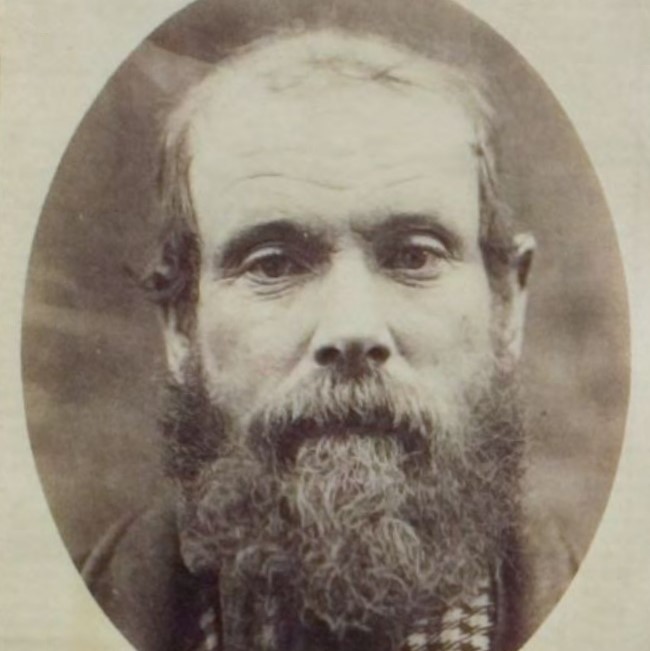
d: 1883
Robert Francis Burns
Summary
Name:
Years Active:
1880 - 1881Status:
ExecutedClass:
Serial KillerVictims:
1-8Method:
Bludgeoning / Decapitation / Poisoning / Blunt forceDeath:
September 25, 1883Nationality:
Ireland
d: 1883
Robert Francis Burns
Summary: Serial Killer
Name:
Robert Francis BurnsStatus:
ExecutedVictims:
1-8Method:
Bludgeoning / Decapitation / Poisoning / Blunt forceNationality:
IrelandDeath:
September 25, 1883Years Active:
1880 - 1881Date Convicted:
July 20, 1883bio
Robert Francis Burns was born in 1840 in County Limerick, Ireland, and migrated to Victoria, Australia, amid the gold rushes of the 1850s. He arrived aboard the White Star, docking in Melbourne on 19 January 1860 as a nineteen‑year‑old laborer of Irish descent. In January 1868, he married Ellen O’Leary, herself a recent immigrant from Kerry; together they raised eight children, though two tragically died in infancy.
Throughout the early 1870s, Burns and his family lived in Mount Gambier’s Allendale East before relocating to Dunkeld near Hamilton, where Burns selected a 70‑acre parcel of land. By December 1881, his family had settled in Stawell; at his April 1882 arrest, Burns told a constable that his wife and children were "living near the police station at Stawell".
Burns’s life was closely tied to the booming railway construction sweeping Victoria in the 1870s. As navvy camps sprang up near Ararat, Stawell, Dunkeld, and Hamilton, Burns found steady work building tracks, bridges, and embankments, living in sparse tent camps with his fellow laborers.
murder story
Robert Francis Burns’s descent into infamy began to unfurl in February 1879, when his workmate and tent-mate Francis Heenan fell suddenly ill and died. Despite vomiting, chills, and severe diarrhea, an inquest ruled his death as English cholera, citing friendly relations between Burns and Heenan, lack of injuries, and no evidence of foul play. The ruling came despite later suspicions, prompted by emerging patterns of death in Burns’s orbit, but no conclusive proof of poisoning or violence was ever confirmed.
In August 1880, the case turned decidedly darker. A sheep mustering party discovered a decomposed body, face-down and partially buried, in a paddock near Reedy Creek, about seven miles from Wickliffe. The back of the skull was fractured, and a leather purse lay nearby. A magisterial inquiry declared "wilful murder," and Dr. William Jones concluded the victim had likely died around 1 July, the result of blunt force trauma inflicted by a heavy instrument. The deceased was soon identified as Michael Quinlivan, Burns’s former roommate and drinking companion. Their close friendship, shared employment, and joint travels—particularly financial connections—turned Burns into the prime suspect, though the murder was only confirmed later in court.
Then, in early January 1882, a miner near the Deep Lead diggings stumbled upon a grisly sight: a headless, naked body gnawed by wildlife. The victim was identified as Charles ‘Scotty’ Forbes, a fellow navvy last seen with Burns. Although clothing confirmed Forbes’s identity, the evidence was wholly circumstantial, and in August 1882 a jury acquitted Burns under Justice Williams in Melbourne's Central Criminal Court.
The authorities didn’t stop there. In October 1882, Francis Heenan’s grave was exhumed amid renewed suspicions of poisoning, but decomposition and unclear remains thwarted any conclusive findings. During his six months of remand in Hamilton gaol, Burns was considered volatile and fearsome, his sleep broken by "hideous roars," unsettling both inmates and guards alike.
Burns’s ultimate downfall came in court. His first trial for Quinlivan’s murder began on 26 February 1883 before Justice Higginbotham at the Hamilton Assizes. Over forty witnesses testified across four tense days. But after deliberating for over six hours, the jurors failed to reach a verdict, forcing a mistrial. A second trial began on 19 July 1883, before Chief Justice Sir William Stawell. Once again, dozens testified—including an eyewitness who placed Quinlivan with Burns near the murder site. The jury deliberated for just under an hour before returning a guilty verdict, prompting Stawell to sentence Burns to death on 23 July 1883.
On 25 September 1883, Burns was executed at Ararat Gaol. Father Meade administered the last rites, and in one chilling moment, the hangman, Elijah Upjohn, later claimed Burns whispered:
“I have cooked eight—five in Victoria and three in New South Wales.”